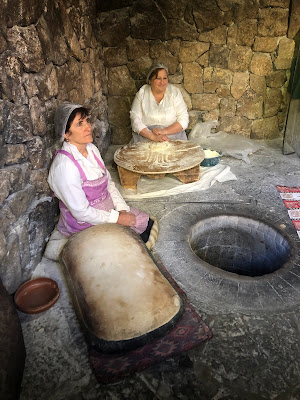 |
| Garni Temple is a pagan temple of the Greco-Roman style. It stands overlooking a renowned beautiful canyon named Canyon of Garni where stone formations give the image of falling crags. |
 |
| The canyon where the crags are found. |
 |
| Behind the temple is this stone which bears words in Cuneiform a form of writing used from the Bronze Age until the beginning of the Common Era (AD). |
 |
| This image and the one below resemble symphonies in stones hence this area is also referred to as the Symphony of Stones. |
 |
| Restaurant staff demonstrate the making of Lavash, an Armenian flat bread, baked in stone-made ovens. Lavash is a national dish listed in the UNESCO intangible heritage list |
 |
| Nara gleefully demonstrated how to eat Lavash wrapped with veggies. |
 |
| This could be accommodation for priests and other monastery residents cut into the rock. |
 |
| Geghard means spear in Armenian so the monastery is named in honour of the Holy Spear that pierced the side of the crucified Christ. The Holy Spear is kept in the Etchmiadzin Cathedral museum. |
 |
| A fuzzy image of the altar of the church. |


No comments:
Post a Comment